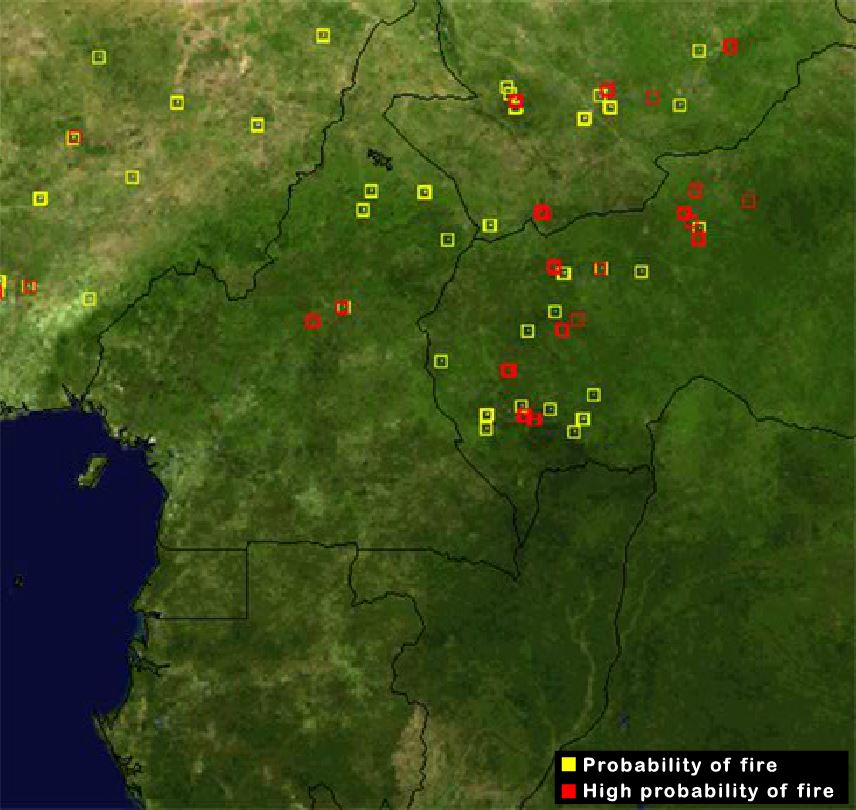Up until now we have discussed the synoptic patterns that play a role in forest fires and slowly zoomed in to discuss which atmospheric features are associated with forest fires.
In this chapter we will zoom out again, to 35.787 kilometres to be exact, as we will discuss and show how Meteosat Second Generation is suited for detecting and monitoring wild fires. As you will see, this is of great importance, especially in remote areas.
Radiation Laws and Hot Spots
Fig5.1 - EUMETSAT MPEF fire product for Meteosat 9 over central Africa on 22 January 2008 at 14 UTC. "Probability of fire" in yellow squares and "high probability of fire" in red squares.
Figure 5.1, obtained from Meteosat 9 at 14 UTC on 22 January 2008, shows the locations of probable fires over Central Africa. Yellow squares denote a lower probability and red squares a higher probability for fires.
The algorithm behind this product uses bands of 3.9 μm and 10.8 μm in the thermal infrared region of the spectrum. To understand why these bands are used, you must first recall the Planck law for black body radiation and the Wien displacement law of radiation.

